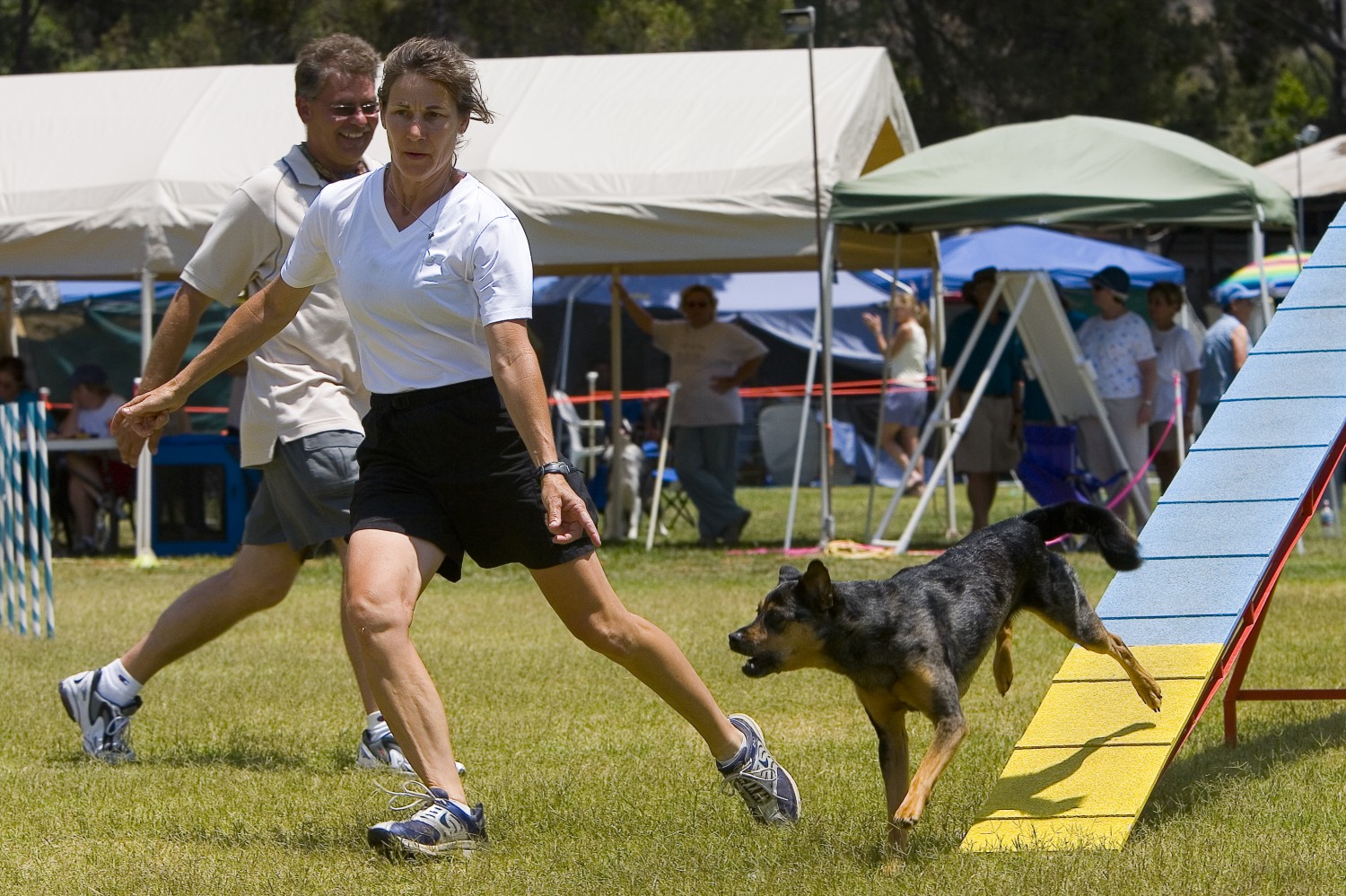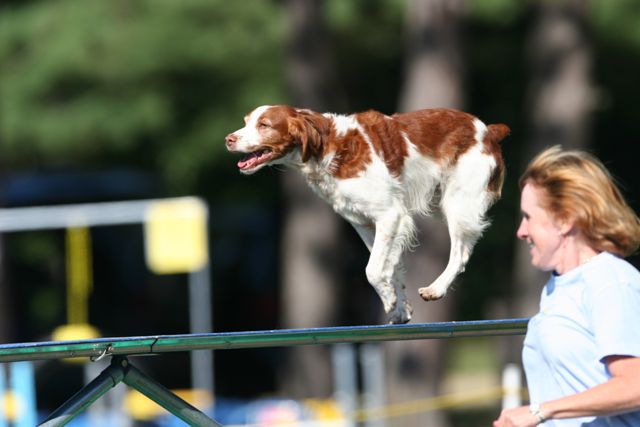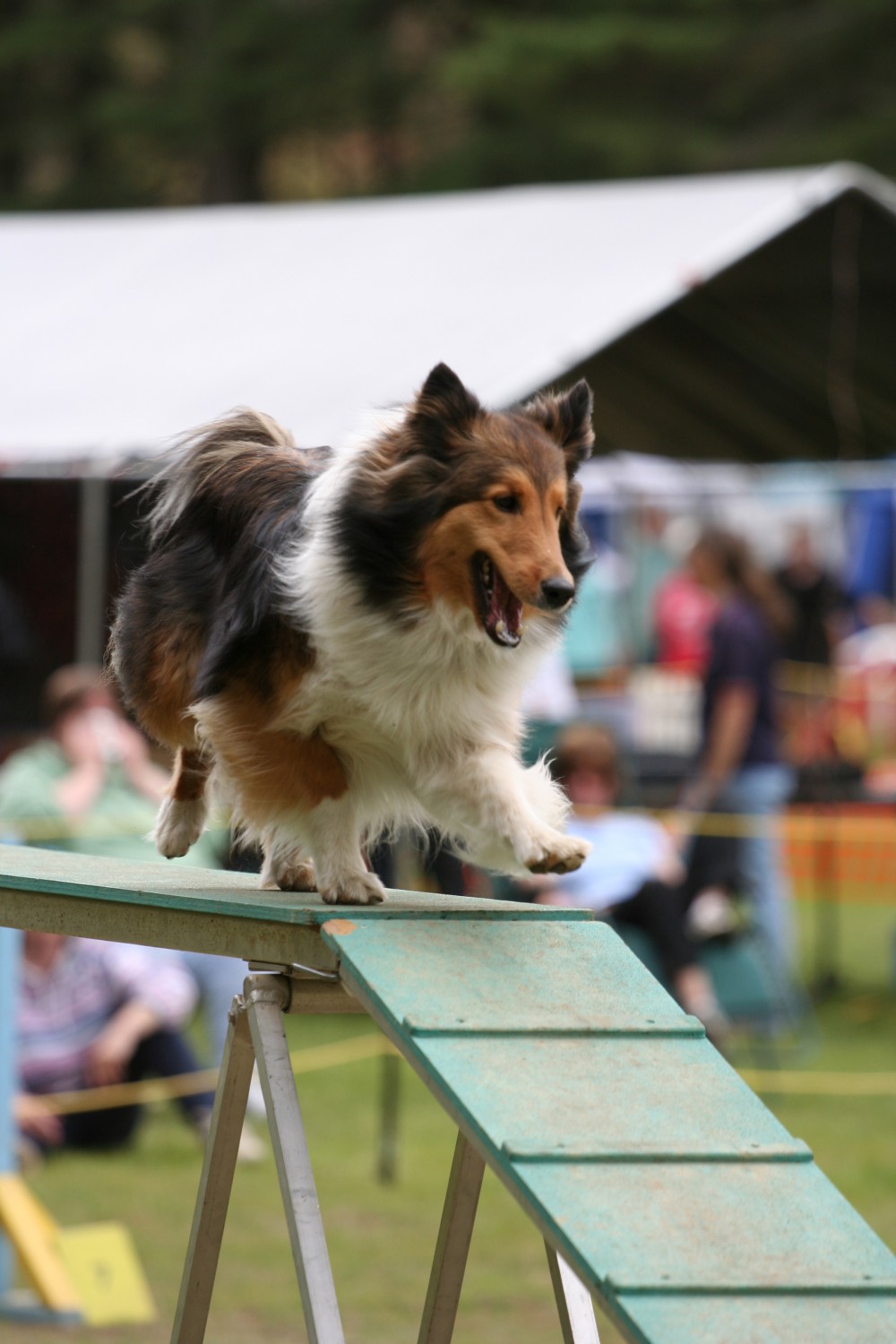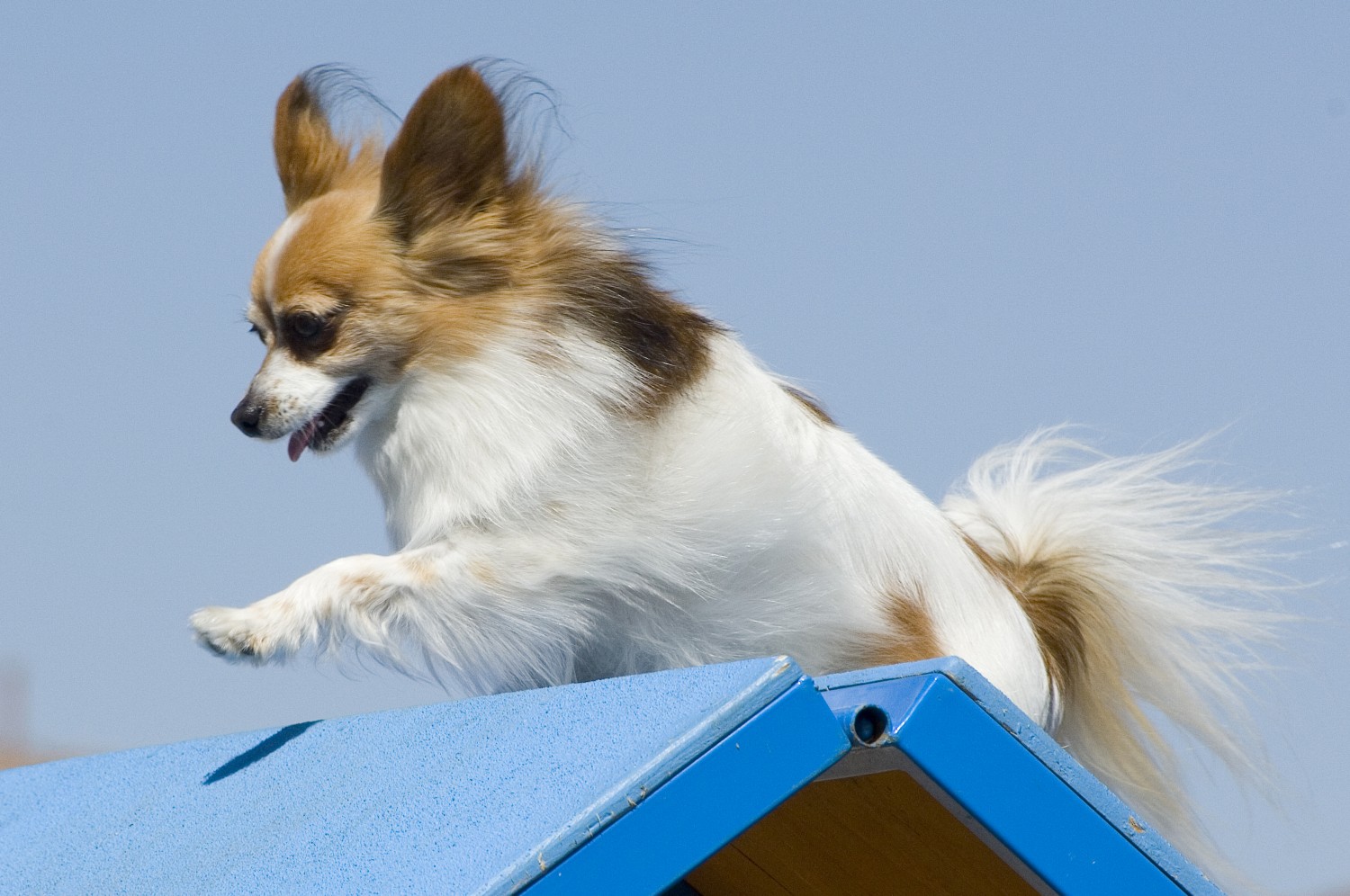Last month we began a two part feature on canine agility. In part one we introduced you to the sport and how your veterinarian fits into the picture. In part two, we have an exciting interview with Monica Percival, founder of Clean Run, the country’s number one agility magazine and website. Enjoy!

1. What is the most important quality for an agility dog?
A willingness to play and intereact with their handler. Agility is really just structured play – a series of “tricks” strung together. All of our training involves molding and shaping the dog’s play drive so they learn to love the game and playing with us. While initially they may do a tunnel, for example, only to get their treat or ball, they learn that playing with us is a lot of fun and doing agility and running with us becomes just as rewarding as a treat or a toy. We build value in us every step of the way.

2. What is the most important quality for an agility handler?
Patience. Many people start the sport with a dog that loves to run and jump and they think it will be easy. It’s certainly not rocket science, but it is a different kind of training and work than most dogs are used to. Teaching a sit or a down is much easier than training the dogwalk, for example. Most dogs aren’t afraid of sitting or lying down, but some dogs may be fearful of the height of the dogwalk or the narrowness of the plank. There are also a number of “rules” that apply to how the dogwalk must ultimately be performed. These rules are for the safety of the dog. So we have to approach the training in a way that will create lots of confidence in the dog and also have them do the obstacle in a safe way that meets the rules. This takes time. All of us were once new in the sport and we remember our impatience. As soon as we started running with our dogs, and feeling the wind in our hair as we now joke, we would tend to start expecting too much from the dog. Just because they know each obstacle, doesn’t mean they can string them together right away. So the handler needs to be willing to relax and have fun with the process.
Age isn’t a gating factor as it is in many sports. The average age of agility handlers in this country is 35 to 65, with a huge number in the 50 to 65 range. There are even a number of people competing in their 70s and 80s! It’s amazing to see. The dogs can be taught to work quite independently of the handler.

3. How common are injuries? Why do they happen?
Injuries are less common then people think. In my opinion, the majority of injuries occur because the dogs are out of shape. Just doing agility is not enough conditioning for the dog. He needs to build muscle and core strength through other activities such as hiking, running, and crosstraining work. We recommend “ball work” for most dogs. Using a peanut or fitness ball, there are a number of strengthening exercises that are very easy to do indoors, which is especially useful during the New England winters.
Clean Run worked with a team from a hospital in New York to do a study of how common injuries are and what types of injuries are most prevalent. The resulting article was published in Clean Run magazine as well as in several journals. It demonstrated that agility is a pretty safe sport. And as trainers, we are always figuring out how to improve our training to make it even safer.
4. What is the difference between USDAA, AKC, and NADAC agility?
We actually have even more of an alphabet soup of organizations than that! There’s UKI, TDAA, UKC, DOCNA, and even more! Each organization has their own “take” and focus on the sport. NADAC, for example, rewards distance skills where the handler is able to control the dog even if they are very far away. AKC’s charter is to provide a version of the sport that any dog can do whether you have a Chihuahua or a Great Dane. So their jump heights are lower, for example, and the courses a little less demanding than upper level USDAA courses which are promoting the international version of the sport. But at the novice level, where you would start, all of them are very similar – the dog needs to demonstrate that he can perform all of the obstacles and take direction off leash.
A nice change in AKC agility in recent years is that they now allow mixed breeds to compete in their agility program. They have to be spayed or neutered, and then registered in the AKC’s PAL program. USDAA, NADAC, and the other organizations have always allowed mix breeds to compete.
But even if you never compete in agility, agility classes are great fun and something the whole family can do together. Most dogs love the sport and getting out to a class is a great way for them to burn off physical steam as well as use their brains.

5. How long have you been doing agility?
I started in 1988, before AKC agility existed and when USDAA agility had no titling classes. We competed simply for fun.
6. Tell us a a bit about Clean Run the magazine and website/ retail portal.
I started Clean Run in 1995 because my friend and I realized that there was no way for agility people around the country to communicate easily with each other and share training ideas. There were small pockets of trainers in different places, but we were all isolated because the sport was still in its infancy. The magazine started as a weekly newsletter of training plans – since we all taught agility classes on a weekly basis, my partner felt we should publish weekly. Our focus was on material for instructors and “serious students of the game.” After two years, we turned it into a monthly magazine and tried to offer content for all levels of competitors. Several years after starting the magazine, we decide to publish a series of 3 books to provide class plans for instructors. Since I was taking those books along to trials to sell, I started taking a few toys and bones and a bit of this and that. My little wagon of goods turned into a small trailer and eventually a car trailer. Then next thing you know we have office space… 20 years later, we have a full warehouse. We were one of the first online retailers in the dog training world which was very exciting. We got to help develop the software that ran the website and that eventually other businesses used.
Now besides toy toys and treats, we sell a variety of training products as well as trialing products. For outdoor trials we have shade panels for people’s tents, shoes for running the courses, etc. Our goal is to have everything for the agility enthusiast. We branched out from books into DVDs. We’ve published 41 books and are just releasing our 51st DVD.
You don’t have to be involved in agility to find something in our online store – www.cleanrun.com – we have supplies for every dog and our prices are much lower than the big box pet supply stores.

7. How big a deal is Brite’s finish at worlds?
For Brite’s owner and handler, and Clean Run, it’s a huge accomplishment. A bronze medal in an international event is not easy to obtain. It’s our version of the Olympics. Most people in the sport don’t have any interest in competing at that level. The training time and the pressure are greatly multiplied and the difficulty of the courses is much greater. At the 2015 World Agility Open where Brite earned her medal, 36 countries sent their best dogs and handlers to compete. So it’s quite an accomplishment. And, as the owner of her father, I’m quite proud!
Probably 90% of the people in agility are happy being weekend warriors. But the special thing about agility is that all of us go to the same events on the weekend. So even if you don’t want to compete at the national or international level, you get to enjoy watching the people that do.
8. Best way to get started?
Find a club or dog training center in your area that offers agility classes. Usually you can find places using Google. Or you can go to an organization’s website and see if they have clubs in your area. USDAA has a search page here. If you select New England, you will find there are 4 affiliated clubs in Vermont.

9. What is the fastest dog working in agility today (breed)?
Border Collies in the highest jump heights. Shelties, Papillons, and Terriers in the smaller heights. But I’ve met lots of fast mixed breeds, Golden Retrievers, Labs, and many other breeds. Here is a video of my friend’s Jack Russell Terrier competing in Spain – small dogs can run really really fast, too!
